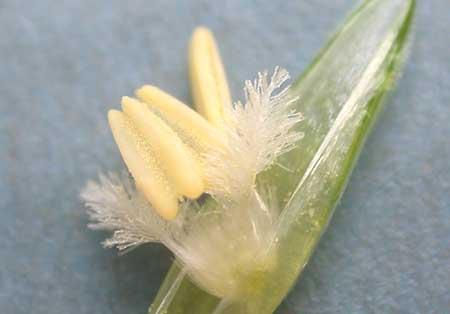Pollination, an important part of the plant reproductive process, is the process by which pollen grains are transmitted from male plant parts to female plant parts before fertilization.
While the basic process of pollination is the same across all plants, different plants are pollinated by different methods. This article will help you answer the question, how does wheat pollinate?
Background information: What Is Pollination?
Table of Contents
Wheat’s Pollination Process
Wheat is one of the world’s most ancient crops, with people farming it since 12,000 BC. Today, wheat is the second largest produced grain in the world, with a total global production of roughly 772 million metric tons every year. Wheat is a large part of most human diets and provides vital nutrients, including carbohydrates and fiber. Due to this high demand, it is essential to ensure that wheat continues to be able to reproduce naturally. Wheat reproduction all begins with pollination.
Wheat flowers, unlike other plants, do not produce vibrant colors or aromatic scents that attract pollinators such as bees and butterflies. Instead, wheat can pollinate without the assistance of common pollinators, in a process known as self-pollination.
Self-Pollination
Wheat is a self-pollinating crop, meaning it can pollinate itself by transferring pollen grains from the male part of the flower, the anther (part of the stamen), to the female part of the flower, the stigma (part of the pistil). This is normally accomplished when pollen grains naturally fall to the stigma. After the transfer of pollen, the flower goes through the fertilization process, which results in the production of seeds, also known as grains or kernels.
Source: Science Aid

Source: Amphasys
Read more: Self-Pollination vs Cross-Pollination
Wind Pollination
In order to harness wind for pollination, rather than insects, wheat produces a large number of pollen grains, estimated at around 1,700 and 2,800 pollen grains per anther. This helps to maximize the probability of pollen being picked up and deposited on the stigma.
Wind pollination typically blows billions of wheat pollen grains throughout wheat fields, distributing them to other wheat flowers. Wheat’s natural features are well adapted to this type of pollination process. For example, the female stigma is typically feathery, sticky, and exposed in order to increase the chance of capturing pollen grains carried by the wind.

Source: University of British Columbia
Wheat has several other adaptations that work to make wind-driven pollination more successful, including:
- Long stamens and pistils (male and female parts, respectively) to increase the chances of pollen being picked up and deposited.
- Small pollen size so it is more easily transported on the wind.
Wheat Hybrid Breeding
As the global demand for wheat is continuously increasing, people have developed wheat hybrid breeding in order to increase wheat crop yields and strengthen food security. The goal of hybrid breeding is to breed wheat that is not only bigger and yields more plants (characteristics cumulatively known as increased “heterosis”), but that is also adapted to more diverse environments.

Source: BAFS/World Grain
Hybrid breeding processes may require the assistance of wind but more commonly depend on hand pollination to bypass the natural self-pollinating process of wheat. In hybrid breeding farmers sterilize the male anther in order to stop the production of pollen. This means that the female stigma of the sterilized wheat can then capture pollen from a different wheat plant that has a greater quantity and quality of pollen grains. By selectively breeding from plants with more pollen and more desirable characteristics, the overall quality of growth of the new plants is increased.
Although this kind of pollinating and breeding process may increase crop yield, some argue that the hybrid breeding process produces less nutritionally-dense wheat grains.

Source: D. Gary Young
